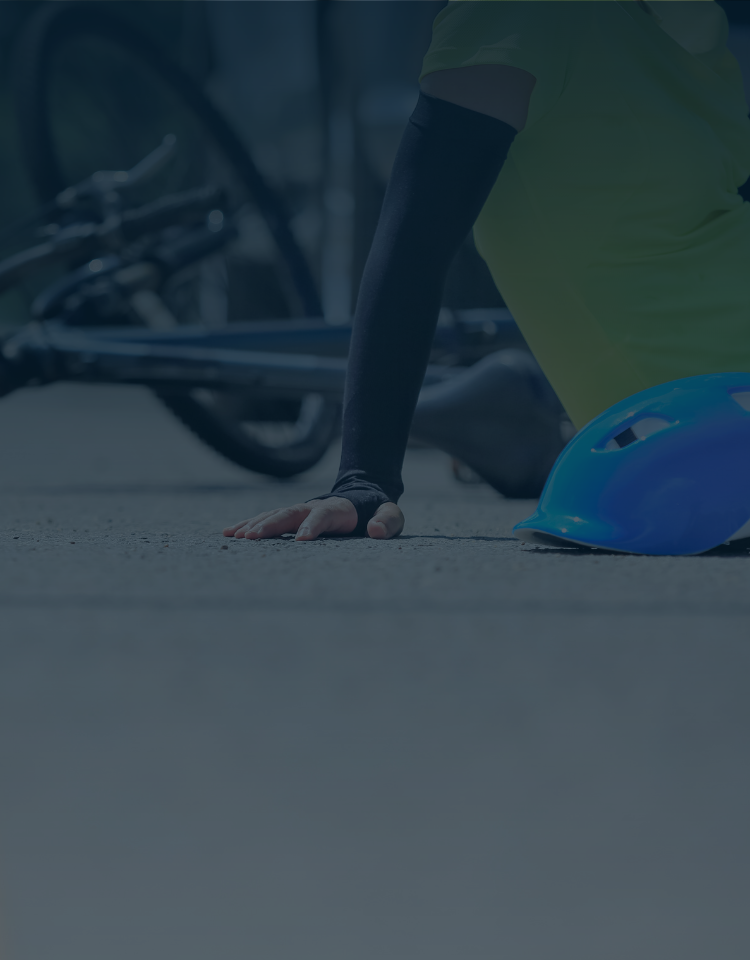By Patrick Brown, Principal Partner and Savannah Snyder, Student-At-Law
With an influx of cyclists on the roads, the safety of cyclists has never been more crucial. Unfortunately, hit-and-run crashes remain a dangerous reality for cyclists on the road. The number of these cold, callous crimes seem to be increasing and at times, accountability lacking.
Just this week, a cyclist was struck by a vehicle in Brampton, Ontario and the driver fled the scene. The impact of the collision resulted in the 33-year-old cyclist flying 15 feet off her bicycle. The cyclist remains in hospital in critical condition.
As a firm that has successfully represented victims of these crimes, we know just how important the rights of the victim are and we put this at the forefront of what needs to be done.
After a hit-and-run, the police will initiate an investigation and start looking to determine if the driver or vehicle can be identified. Public help is crucial in these investigations. Even when found, justice is not always served. The driver may fight the charge and be acquitted due to lack of evidence. They may negotiate a plea and accept a lower charge. They may have the case thrown out due to delay. Even when convicted, many victims feel the sentence is not just or fair.
But what they should know, is that in addition to the above steps, a victim or their family can also pursue civil justice and seek damages [compensation] to alleviate their pain and suffering, loss of income, medical/care costs and seek punitive damages to punish the driver.
A cyclist injured in a hit-and-run crash has multiple avenues to receive compensation, including:
- If the driver is identified, the insurance of the driver and vehicle involved in the collision will respond to the claim,
- If there is no insurance on the driver or vehicle, a claim can be made to the persons own insurance company,
- If no insurance is available, a claim can be initiated with Ontario Motor Vehicle Accident Claims Fund.
When deciding whether to pursue a lawsuit, it is important to document evidence and investigate the scene.
If you are able, take photos and videos of the crash and of your injuries. It is important to try to note down the vehicle’s license plate number and get the contact information of any witnesses.
Where the crash resulted in loss of consciousness, severe injuries, or death, someone can return to the scene to take photographs and videos. It is important to return to the scene as soon as possible to take accurate photographs depicting the area of the collision.
When returning to the scene, ask any nearby shop owners or homeowners if they saw the crash, attended the scene, took any photographs or videos, if they have cameras on site, and whether they have any additional information. Write down the contact information of any person you speak to.
Take photographs of the area the collision occurred, and look for any security cameras and signage, such as warning signs and speed limits. Additionally, note down whether there are traffic lights, stop signs, or cycling lanes nearby. It may be important to return to the scene at a similar time of day, such as if the crash occurred at night or during rush hour. These steps are extremely important so evidence can be preserved, and the victim can be compensated as they are able to prove the nature and extent of their injuries and losses.
At McLeish Orlando, we work with experienced experts such as reconstruction engineers to evaluate the collision site and determine the speed of the vehicle and the direction of travel. This is often important as the cyclist may have lost consciousness and have no recollection of the incident. At times we will use private investigators to supplement the police investigation. In addition, a wealth of specialists are hired to ensure the victims claim is respected.





